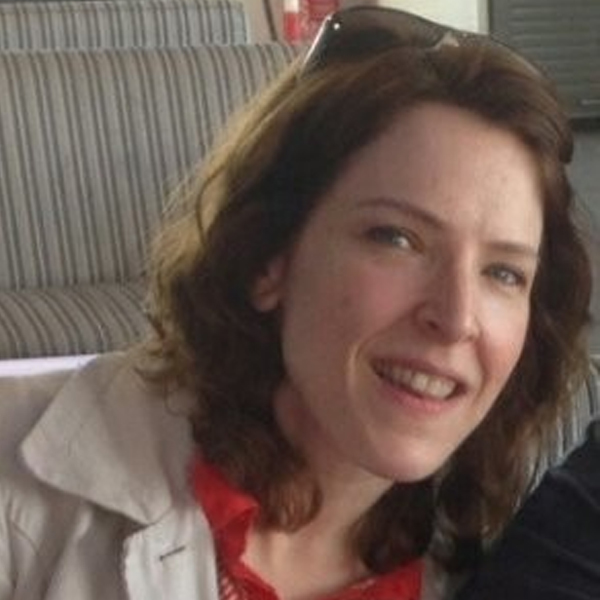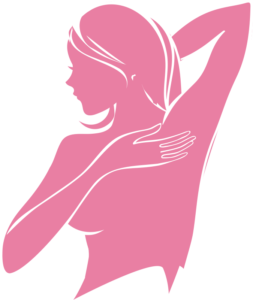Learning from my story.

“Tell the story of the mountain you climbed. Your words could become a page in someone else?s survival guide.” Morgan Harper Nichols
We are very grateful to Melanie Cameron for sharing her experience and words of wisdom about breast self- exam, clinical exam and hormones for IVF.

Learning from my story.
My name is Melanie Cameron (née George). I am 44 years old and I was diagnosed with metastatic breast cancer in September 2019. At the time of my diagnosis, I was a Consultant Neuropsychologist and clinical lead for a large neuropsychology service in East Kent. My diagnosis was devastating for me and for the people who love me. I have retired from work and I may die within the next 2-3 years. The only thing that makes my situation more bearable is the thought that others might learn from my experience and make changes that will enable more lives to be saved in the future. On reflection, four factors may have contributed to my late diagnosis.
1. Recommendations regarding self-examination
Using the flat of your hand or fingertips to examine your breasts I have large, dense breasts and my tumour is deep within my right breast. When I use the flat hand/ fingertip technique, i.e. ?keeping the fingers flat and together? (Breastcancer.org) that is recommended during self-examination, the tumour is undetectable. I know of two other stage 4 women with large breasts who did not detect their tumours because they were so deep. As a result of the flat hand/ fingers recommendation, I naively assumed that cancerous lumps would appear near the surface of the breast tissue; I have read that others have found a lump akin to a pea.
Conducting examinations whilst lying or standing
It is typically recommended that people lie down and also stand in front of a mirror with their hands on their hips during self-examinations. I recently discovered that my breast tumour is most evident (visually and by touch) when I bend over, allowing my breasts to hang forward. This approach allows me to examine the deeper tissue at the back of my breasts. Including this as a recommendation for self-examinations might help other women who have deep tumours in the context of larger breasts.
Comparing your breasts in the context of ?lumpiness?
People are often advised to compare their breasts. I have a similar area of lumpiness in the corresponding region of my left breast. I read the following information and felt reassured:
?When in doubt about a particular lump, check your other breast. If you find the same kind of lump in the same area on the other breast, both breasts are probably normal? (Michigan Medicine website). “If both breasts feel the same, it may be normal. Normal breast tissue can sometimes feel lumpy.” (National Cancer Institute).
This is why I did not seek help earlier. I assumed that I simply had areas of normal lumpy breast tissue and that this did not warrant a trip to see my overstretched GP. An MRI scan subsequently confirmed that the left area was benign but that the right side had developed into a cancerous tumour. The American organization Susan G Komen includes a useful section on ?breast lumps or lumpiness?* in their webpage on self-examination. This is much more informative as it underscores the need to compare the size of bilateral lumps.

2. The proactive role of clinical examinations/ screening
The change in my breast was ultimately discovered by my husband. When I visited my GP (upon his insistence) she recognized immediately that I had a large lump. Had I been offered a routine clinical examination by a trained nurse/ medical professional and mammogram when I turned 40, my cancer may have been detected at an earlier stage. Again, this might have saved my life. There seems to be an assumption that women are experts when it comes to their bodies and so are best placed to pick up any problems. This is clearly not true in my case. I simply did not notice the red flags that were obvious to others. Other women have told me that they do not carry out self-examinations because they do not feel confident in distinguishing normal vs abnormal breast tissue.
Research highlighted to me by Dr Paula Gordon, Clinical Professor at the University of British Columbia and breast radiologist, has found that women who have mammograms starting at 40 are 44% less likely to die of breast cancer. Contrary to popular belief, she also informed me that radiation risk is ?almost zero? for this cohort.
3. A lack of public awareness about breast cancer
I signed up for the free NHS Health Check for people aged 40-74 when I turned 40. The fact that I was at increased risk of breast cancer was not mentioned, which was a missed opportunity. It would be helpful if the risk could be highlighted during women?s smear tests and during routine intervention screening offered to staff by many NHS trusts.

4. Hormones given by IVF clinics may fuel undetected early breast tumours.
Two and a half years prior to my diagnosis, I underwent IVF. I do not believe that IVF caused my cancer. However, the current size of my tumour suggests that I was probably at an early stage of my disease when I commenced my treatment. I have read that a typical estrogen level will be less than 75 at the time of baseline IVF evaluation and may get as high as 2,000 ? 4,000 (in a normal menstrual cycle the estrogen level is less than 50 at the start and peaks at about 250 ? 350). It may also be significant that I took the estrogen-boosting drug, DHEA, on the advice of two consultants at my IVF clinic. DHEA has been shown to increase the risk of breast cancer.
My oncologist agrees that that the treatment that I received may have led my hormone receptor-positive breast cancer to develop and spread more quickly (conversely, the hormone treatment that I am currently receiving has led to dramatic shrinkage of my primary tumour). The oncologist of a leading secondary breast cancer campaigner, Nicola Newman, also believes that IVF drugs may have acted as an ?accelerant? in her case, an issue that was discussed during a recent Sky News interview. Her breast cancer subsequently spread to her bones. The entertainer Paul Merton?s first wife made similar claims before she died of metastatic breast cancer. I am not aware of any studies that have looked at this.
Recommendations
I should be most grateful if the following points could be considered by those responsible for educating women about breast cancer in the UK:
1. I believe that it would be circumspect if self-examination guidance encouraged women to get all new lumps (bilateral or otherwise) checked by their GP.
2. Many women would find the Susan Komen advice on ?breast lumps or lumpiness? useful. Could a link be added to UK websites that provide guidance on self-examination?
3. In my opinion, women should be advised to bend forward during self-examination and to compare their breasts as they hang. This may be of particular benefit to women with larger breasts and deep tumours.
4. Women should be encouraged to use a range of techniques to examine their breasts. The flat hand technique might help women with smaller breasts to detect cancer. However, women with larger breasts might need to manipulate their breast tissue (i.e. by gently gripping sections of breast tissue) to discover deeper lumps.
5. I believe that research may help to confirm whether an early breast cancer is fueled by the drugs given during IVF including DHEA. This is likely to require animal studies and could form the basis of a PhD.
6. I recently contacted the Care Quality Commission to express my concern about the risks of IVF for women with undiagnosed early stage disease. Many women now wait until their mid to late 30s/ early 40s to seek help with infertility, i.e. at a time when their breast cancer risk will be increasing. It might be circumspect to mandate IVF clinics to ensure that women undergo a clinical breast examination (and mammogram if over 40) prior to undergoing IVF. This may only be practical for those at highest risk (i.e. over the age of 35). I believe that this could save lives.
7. I think it would be helpful if nurse-led breast clinics were set up in accessible places such as high street pharmacies. I understand that the charity ?CoppaFeel? are introducing advisors in the high street store Superdrug but they do not carry out physical examinations. My experience underscores the risk of relying on women to carry out effective self-examinations. An additional objective clinical breast examination/ check may help to identify more breast cancers at an earlier stage. A clinical trial might help to confirm this.
8. A growing body of evidence indicates that if mammograms were offered to women post 40, it would save lives.
Yours faithfully,
Dr. Melanie Cameron
